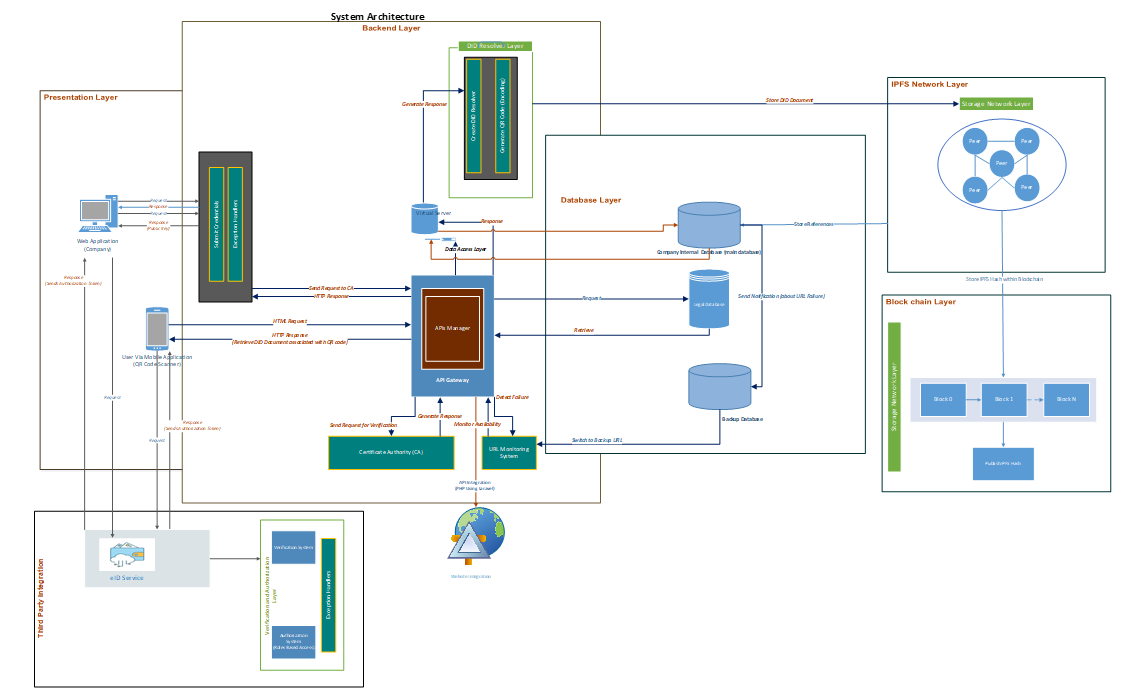
Table Of Content
the need for secure and efficient management of digital credentials and identities has become paramount. One of the most promising solutions lies in the use of decentralized technologies like Blockchain and IPFS, combined with digital identity systems such as European Digital Identity (eID)
IT Architecture Layered Diagram
Presentation Layer
Components:
- Web Application: This is the interface where companies submit credentials and users interact with the system. It provides the main web interface.
- QR Code Scanner: A tool integrated into the user’s Mobile Application for scanning QR codes.
- Digital Wallet Interface: Allows users to manage roles and access credentials using European Digital Identity (eID). This system serves as a third-party to handle authorization.
Interaction:
- Company submits credentials.
- Company generates and scans QR codes.
- Role management and access through eID.
Application Layer
Components:
- User Verification: Handles the submission and verification of digital certificates through an API provided by the Certificate Authority (CA).
- DID Management: Creates and stores DID Documents on the IPFS Network while storing IPFS Hash on the blockchain. The Blockchain publishes those IPFS hashes. The other option is that the DID documents can be stored directly on the blockchain.
- QR Code Generation: Encodes DID URIs and signatures into QR codes.
- Verification Process: Verifies QR codes by checking signatures and retrieving DID documents from IPFS.
- Role-Based Access Control: Manages user roles and access permissions using eID.
Interaction:
- Credential verification with CA.
- DID registration and management.
- Store IPFS hash on blockchain.
- QR code generation and verification processes.
- Role-based access control through eID.
Data Layer (Database, IPFS, and Blockchain)
Components:
- Primary Database (PostgreSQL): Stores main data, such as product specifications.
- Backup Database (MongoDB): Provides a secondary storage solution for failover; the main URL switches to the Backup URL when needed.
- IPFS: Decentralized storage for DID documents, ensuring immutability.
- Blockchain (Ethereum/Polygon): Stores hashes of DID documents for integrity and immutability.
Interaction:
- Data storage and retrieval from primary and backup databases.
- Storing and retrieving DID documents from IPFS.
- Storing DID document hashes on the blockchain.
- Store IPFS hash references in the main database.
- Notification system for monitoring URL availability and switching to backup URLs.
Our services
To understand how ComplyMarket can support you to build your Digital Product Passport, visit this Page or contact us directly.
Warning: ComplyMarket Solutions are patented and any use without written permission from ComplyMarket will lead to severe legal consequences.
written by : Alaa Rezk , Senior software developer
Share with your community
सूचना
एक टिप्पणी छोड़ दो या एक प्रश्न पूछो


